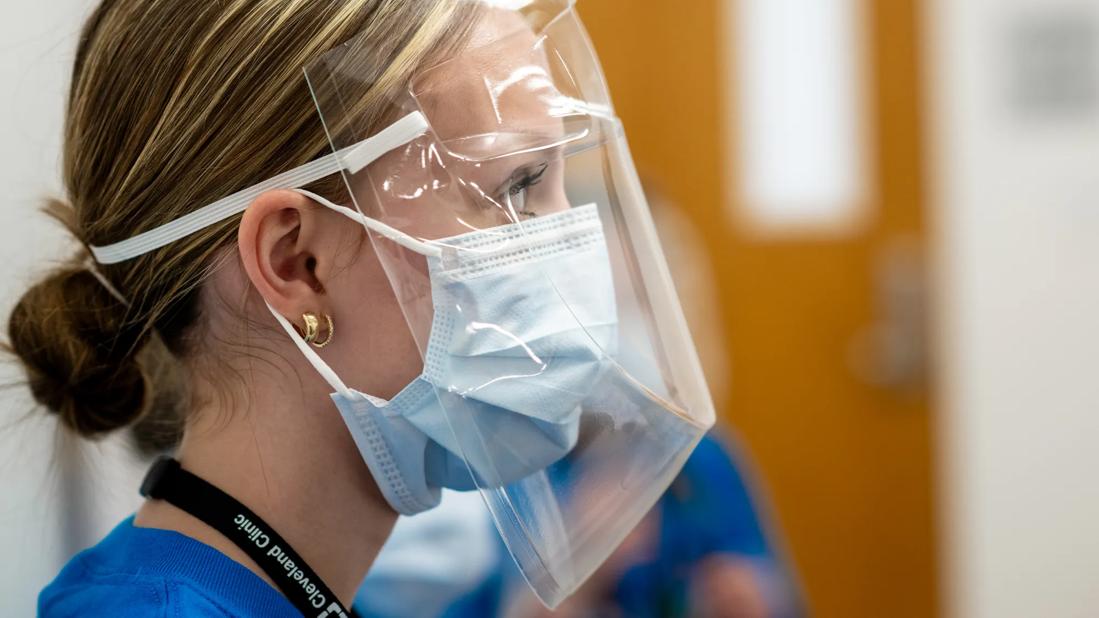First author discusses the framework for recommendations and a call-to-action for clinicians

By Adarsh Bhimraj, MD
Advertisement
Cleveland Clinic is a non-profit academic medical center. Advertising on our site helps support our mission. We do not endorse non-Cleveland Clinic products or services. Policy
A few weeks ago, when I was on our hospital’s COVID-19 clinical service, it felt like an impossible task keeping up with the rapidly emerging literature while caring for patients. My colleagues and I recognized the need for society-supported guidelines designed to equip frontline clinicians with the information they need, enabling them to better focus efforts on what’s most important — caring for patients.
In response, the Infectious Diseases Society of America (IDSA) quickly assembled a team of clinical specialists and those with expertise in evaluating clinical studies and translating findings into evidence-based recommendations. The complete list of treatment guidelines is published here.
These guidelines are intended to be a living, changing document. As we gather more data and continue to learn more about outcomes for patients with COVID-19, we will be updating the guidelines accordingly.
We approached these guidelines keeping in mind that though COVID-19 is associated with morbidity and mortality, it is not a universally fatal disease. Many patients get better with supportive care. The guideline panel was charged with investigating whether there is sufficient clinical evidence to validate the use of available medications.
In the discussion of interventions, there are two aspects of the treatment paradigm. There are antiviral drugs like hydroxychloroquine, remdesivir, and lopinavir/ritonavir that are thought to kill the virus, as well as drugs like tocilizumab, sarilumab (Interleukin 6 receptor blockers) and steroids, that are presumed to help control a patient’s inflammatory response caused by the virus.
Advertisement
The guidelines focused on studies done in hospitalized patients with moderate-to-severe cases of COVID-19. We examined the evidence available on the use of several therapies, including hydroxychloroquine with and without azithromycin, lopinavir/ritonavir, corticosteroids, tocilizumab, and COVID-19 convalescent plasma. We also reviewed data on other medications such as HIV antivirals and the new antiviral remdesivir.
The panel concluded that data are insufficient to recommend any medication for routine use in the treatment of COVID-19 at this time. The management guidelines are a result of a methodologically rigorous process taking into consideration outcomes that matter for patients, like alleviating suffering and preventing death, and not just the ability to kill a virus in a test tube or a Petri dish.
The guidelines call for clinical trials and clinical studies to make advances and to find a treatment for COVID-19. There are already about 100 ongoing and/or pending trials in the U.S. We need to know more in a month or two than we do now — and the only way to do that is to lead investigations that will inform evidence-based clinical practice.
Anecdotal clinical experience alone cannot answer the question of whether a medication helps or harms a patient. As clinicians, we often feel we must do something more than just provide supportive care, like treating patients with potentially useful therapies. It feels like we are doing the right thing. It feels like we are helping our patients, but without evidence-based research, we cannot be certain. We tend to attribute success to the medications we prescribe and failure to the disease itself. But without scientific studies, we cannot fully understand the effects of these treatments and their potential therapeutic benefit. Only well-done clinical studies with a control group can answer the question.
Advertisement
Frontline providers are working tirelessly — and often with limited resources — to provide care for these patients. Not everyone can get their patient into a clinical trial, and that can be rightfully frustrating. If it’s not possible to get your patient in a trial, we encourage hospitals to set up local registries or studies and track the data internally. The key is that we need to systematically document and gather data to understand the potential benefits and harms of these medications.
We do know that the lessons we learn from the COVID-19 pandemic will apply to other infectious disease outbreaks. Our actions today are informing the global health preparedness of tomorrow.
Dr. Bhimraj is a staff physician in the Department of Infectious Disease at Cleveland Clinic and is also Section Head of Neurologic Infectious Diseases.
Advertisement
Advertisement

Patients report improved sense of smell and taste

Clinicians who are accustomed to uncertainty can do well by patients

Unique skin changes can occur after infection or vaccine

Cleveland Clinic analysis suggests that obtaining care for the virus might reveal a previously undiagnosed condition

As the pandemic evolves, rheumatologists must continue to be mindful of most vulnerable patients

Early results suggest positive outcomes from COVID-19 PrEP treatment

Could the virus have caused the condition or triggered previously undiagnosed disease?

Five categories of cutaneous abnormalities are associated with COVID-19